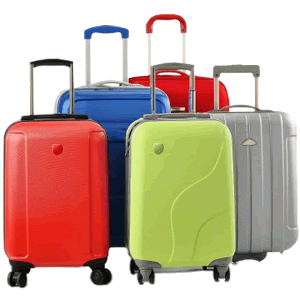 |
Polycarbonates represent a specific group of thermoplastic polymers, which are easy to process, mold and thermoform. Due to these characteristics they are suitable for many applications. Polycarbonates have no unique plastic identification code, they are identified as Other, 7.
Polycarbonate was discovered by Dr. H. Schnell at Bayer AG, Germany, and by D.W. Fox at General Electric USA in the year 1953 and in the late 1950´s the use of polycarbonate for commercial applications started. Initially, polycarbonate was used für electrical und electronic applications, like displays and plug connections, then for glazing of greenhouses and public buildings. Because of its outstanding combination of beneficial characteristics it soon became the material of choice for many other applications. |
The first audio-CD was introduced to the market in 1982. Optical media technology included CD-ROMS within 10 years, and within 15 years DVD. All these optical data storage systems are using polycarbonate. After this, in the middle of 1980, 18 litre water bottles made of polycarbonate started to replace more and more the heavy and fragile glass bottles. In many public buildings and offices you can now find these lightweight and shatter-proof bottles.
Automotive headlamps made of polycarbonate became authorised in Europe in 1992, after they have been used in the USA since the end of the 1980´s. Nowadays nearly every new European car features polycarbonate headlamps.
Polycarbonate shows good thermoforming characteristics. Formed, produced, processed and finished according to recommended techniques, the final outcome will be a high quality product.
|
|
PC Properties
Polycarbonates are high-molecular weight, amorphous engineering thermoplastics. They are characterised by a combination of brilliant impact strength, glass-like transparency, excellent dimensional stability, substantial thermal resistance and good electrical properties. Their ducility is normally found in softer, lower-modulus thermoplastics. Polycarbonates freedom of design differentiate them from other engineering thermoplastics and allows engineers to choose a combination of these properties to meet specification requirements for a wide range of applications.
Polycarbonate (PC) is a linear polycarbonic acid ester prepared from a dihydric phenol and is a very durable material. Although it has high impact-resistance, it has low scratch-resistance and so a hard coating is applied to polycarbonate eyewear lenses and polycarbonate exterior automotive components. The characteristics of polycarbonate are quite like those of polymethyl methacrylate (PMMA, acrylic), but polycarbonate is stronger, usable in a wider temperature range but more expensive. This polymer is highly transparent to visible light and has better light transmission characteristics than many kinds of glass.
|
PC Applications
Polycarbonate plastic is a versatile, tough plastic, which may be used for a broad range of applications. From bulletproof windows to compact discs (CDs), the number of applications is almost endless. Main advantage of polycarbonate compared to other plastic types is its unbeatable strength and its light weight. Acrylic, for instance, is 17% stronger than glass, but polycarbonate is almost unbreakable. Bulletproof windows are often made of polycarbonate. Another advantage is that polycarbonate is just one third the weight of acrylic, one sixth as heavy as glass. The only disadvantage is that it is more expensive than acrylic or glass. Compact disks and DVD are probably the most common known examples of polycarbonate applications. If you ever tried to break a CD before throwing it away, you probably experienced how tough polycarbonate can be. Polycarbonate lenses are also used in sunglasses with a filter to block UV-rays. And their high impact resistance makes them perfect for sports.
Polycarbonate is also used in the electronics industry. Many cell phones, pagers and laptops also use clear or opaque polycarbonate in their casings. Other applications for polycarbonate are for greenhouse enclosures, outdoor fixtures, automobile headlights and its usage for applications in the medical industry.
Somewhat less toxic than polyvinyl chloride (PVC) to produce, polycarbonate nevertheless requires toxic chemicals in its production phase. It is, however, recyclable and environmentally preferable to PVC in applications for which either material can be used.
|
Other commonly used thermoplastics
|
 |
|